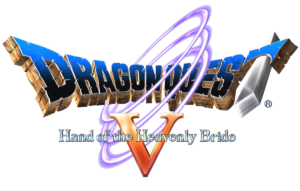“The Dragon Quest series chooses to focus on staying true to its roots by emphasizing consistency, simplicity, and refinement.”
-Brendino
practice makes perfect
When you do the same thing over and over again, you tend to get pretty good at it. This applies to everything we do in life, including in the world of video games. Take your favorite video game. Chances are when you first played the title you weren’t that great at it. It takes time to learn the gameplay mechanics and to actually get good at them. And you will fail a lot during the time it takes to master them.
When I was in elementary school, I can remember playing platforming titles on the Super NES such as Disney’s Aladdin and Super Mario World while hanging out with my friends. I quickly became obsessed with these titles, and because I was not allowed to own a Super Nintendo myself, I had to get my fix of them during short play sessions passing the controller to a friend every time I died. And I died a lot. I would watch my friends play these same levels without dying and be amazed at the progress they were able to make. I found myself wondering, why can’t I be as good at playing video games as they are?
What my younger self didn’t realize at the time was that my mom was correct when she would tell me over and over “practice makes perfect”. But I didn’t make the connection that this advice applied to my hobbies as well as performance in school. Because I myself did not own a Super Nintendo, I was at a disadvantage. I did not have the opportunity to play these games day in and day out as my buddies did.
But Brendino, I thought this article was going to be about Dragon Quest?!? Why are you going on and on about platforming titles from the nineties?
Just as a player gets better with time and practice, so too do game developers get better with time and practice. As hardware gets more powerful, graphics and performance increase and games can be created that are more complex. But cutting-edge graphics have never been the focus of the Dragon Quest series. Instead, the steady drip of additional features and quality of life improvements from one title to the next is the true hallmark of the series.
Consider the first entry in the much-beloved series. Compared to the more recent Dragon Quest XI, it feels very bare bones and basic. In many ways its simplicity was dictated by the limits of the available technology. But what the developers were able to accomplish with the earliest entry serves as the skeletal outline for what a Dragon Quest game is at its heart: A hero setting off to save the world by vanquishing the evil that threatens it.
Dragon Quest has been perfecting the same formula for 35+ years now. And when a company has that much experience under their corporate belt, you can bet money that successive titles in the series get better and better. This is because each entry in the series refines the formula, little by little, while staying true to its roots. This careful balancing act has created a video game series like no other, one that pays homage to its origins while at the same time implementing small changes to the system that does not alienate its fanbase.
In case you are interested, here is a title-by-title breakdown of some of the major quality of life improvements and additional features.
dragon quest refinements by title

- Multiple playable party members
- Churches can now be used to revive fallen characters and remove status ailments
- Acquisition of a ship allowed greater exploration
- New spells that allowed a player to buff their own characters or debilitate monsters instead of just inflict damage
- Gambling was introduced
- Multiple locations to save progress
- Faster traveling between distant areas through inclusion of teleportals

- Character customization
- Ability to change vocations
- Experience points gained in battle are shared between party members
- Possible to “attack” allies in order to cure status ailments
- Banks allow items and gold to be safely stored
- Aerial vehicle allows greater mobility
- Specific locations can be chosen when using Zoom spell or a Chimaera Wing

- AI-controlled party members
- Story is broken up into chapters that focus on specific characters
- Wagon was implemented to allow up to eight party members to travel together simultaneously
- Collectible Mini medals
- Items can now be found in urns, drawers, and cabinets

- Story occurs over the course of three generations
- Monsters are able to be recruited
- Pots and barrels can now be searched for items
- No more wasted turns! If a monster dies that a character targets, the character chooses a new target at random to attack
- Boomerangs and whips can now attack multiple enemies

- Party chat feature implemented
- Faster movement
- Wells can now be explored
- Automatically opening doors
- World map can now be accessed at the press of a button
- A bag to store a player’s excess items

